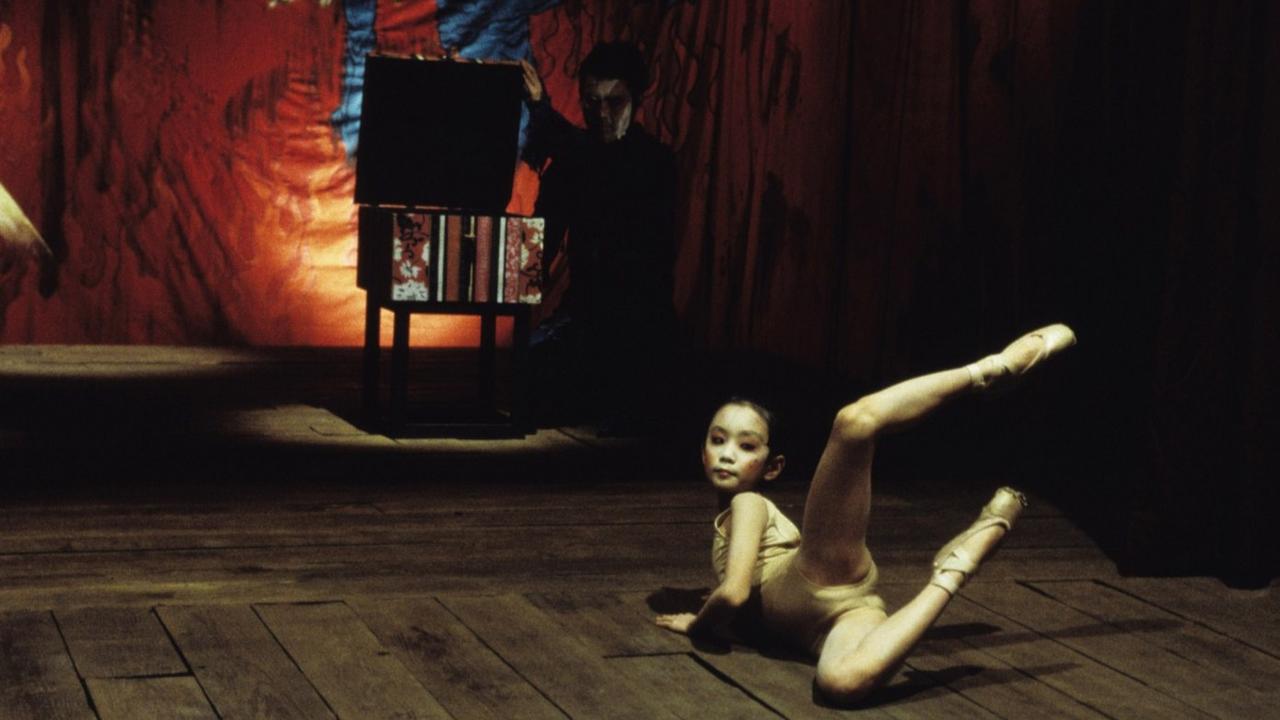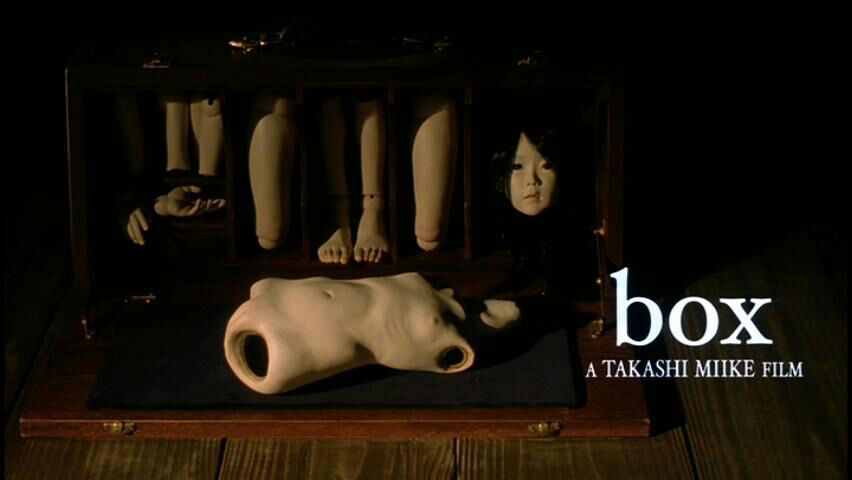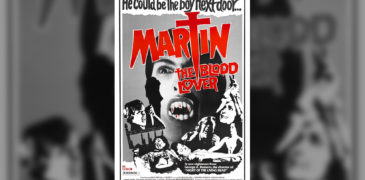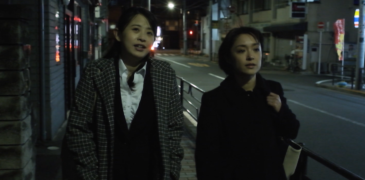
Box can be called confusing, to say the least. It is a deeply psychological drama with a sheer disturbing quality that could make it easily seen as part of the horror genre. Both the visuals and the narrative are surreal, more of a bizarre dream than a recounting
The visuals are very artistic as well and share an amazing aesthetic appeal. With everything from twin sisters twined together in a ballet-esque performance, to the drip of blood rolling down their stepfather’s cheek so as to resemble a tear, every frame in this film is meant to be symbolic and precise.

Like a timely ping-pong game, the story switches between flashbacks and present tenses. Box also makes use of an odd, unnatural flow. This does not detract from the overall feel, however, for this style suits the dark and interpretive account.
Our story centers around a young adult author named Kyoko, who is struggling daily to come to terms with some unknown, past psychological scarring. In the beginning, we see the adult Kyoko finishing one of her novels and giving it to her editor. He seems somehow familiar and important to her, and in a kind gesture, he gives her a small, ornamental box. As she gazes upon its form, her memories unfold…
Box has many deep ideals, such as different perceptions of reality, the want for change –even if it goes so far as to harm another for our own betterment, and more. Kyoko’s jealousy and desire to live her own life, separate from her sister’s, drove her to do horrible things. For the rest of her life, she lived with a guilt that tainted any happiness she had felt. Was it worth it? Would she have repeated her choice if she had another chance?
Takashi Miike is well known for his ambiguous endings and plots left open for the viewer’s interpretation. Box follows Miike’s Audition in this aspect. He also has a flair for extreme, graphic visuals that add a disturbing and dark beauty to his tales. Since this work is similar to Sion Sono’s Suicide Circle, there is also a deeper meaning and moral behind all of the alarming elements.
Only used occasionally, the somber musical chords lend a note of melancholy to the film while preserving its subtle beauty. Never overwhelming, and placed appropriately, Miike knows something that many directors should learn: sometimes silence is best.

Another plus for this movie is the acting. As we follow along with Kyoko, who is brilliantly portrayed by Hasegawa Kyoko, we experience everything that she is going through. She takes on equally the mind-boggling tragedy, the weighty guilt, the deepening envy, and the simple need to be loved. Through her acting, Hasegawa brings her own into this film. Her skills are incredibly convincing.
A definite bonus to the DVD version of Box is the director’s commentary. Giving additional insight and clues, Miike still won’t give the meaning away to you, but he will add extra perspective. Watching the commentary after the film itself deepens one’s understanding, raising it to a new level. The more you consider, the more you’ll understand. You’ll certainly be in a state of wonderment for some time after the viewing.
Along with the previously mentioned visuals, the color scheme is something Miike always keeps in mind. Different tones accompany the flashbacks versus the modern moments, and the color is always suited to the mood. He uses colors such as blue tones for loneliness, reds and oranges for jealousy, and softer hues for hope. I don’t believe that I’ve ever seen color used so effectively before.
As long as you don’t mind giving a movie as much as it takes -and coming to your own interpretation rather than it being laid out for you- Box is a stunning and brilliant voyage into the murky, uncertain elements of the mind.
More Film Reviews:
Urotsukidoji II: Legend of the Demon Womb (1991) Anime Review
Urotsukidoji II: Legend of the Demon Womb is a 1991 adult-oriented sci-fi horror anime film written by Toshio Maeda, Shô Aikawa, and Kôichi Ôhata, and directed by Hideki Takayama. The…
Cocaine Bear (2023) Film Review – A Roaringly Good Time
Cocaine Bear is a 2023 American comedy thriller, written by Jimmy Warden and directed by Elizabeth Banks. The film is based on the true story of a drug dealer’s plane…
Luzifer (2021) Film Review – Religious Fervor and Unforgiving Isolation
“Every day we stray further from God’s light” may be a ‘meme-able’ saying, but it is one that is none-the-less true when we look at a mix of contempt and…
Rampo Noir (2005) Film Review- A Bizarre Japanese Arthouse Must-Watch
While anthologies can be slightly hit or miss at times, Rampo Noir (2005) seems determined to set itself apart. A lush and stylistic horror film with challenging eroticisms and unhinged…
Martin (1977) Film Review – The Horror of a Very Sad Vampire
Martin doesn’t think much of being a vampire. He knows what he gets up to once the sun goes down. The way those women look at him when he suddenly…
One Day, A Woman (2022) Film Review – A Tragic Decline of a Young Woman
After a hard day of work, 36-year-old Yuko Sawamatsu returns to her apartment for an evening to unwind. However, her memories of a recent affair with a married man keep…

Hello, I’m Quinn. Saying I’m deeply into fashion and Japanese culture is an understatement. We’ve renovated entire rooms of our house to dedicate to my collections of lolita and other Japanese fashions. I enjoy balancing the cute with the macabre, and the more disturbing it is, the more I’ll enjoy it. Thus, my love for Asian horror and manga was born. Thank you for taking the time to read my writings. I look forward to discussing films and aesthethics with you!





